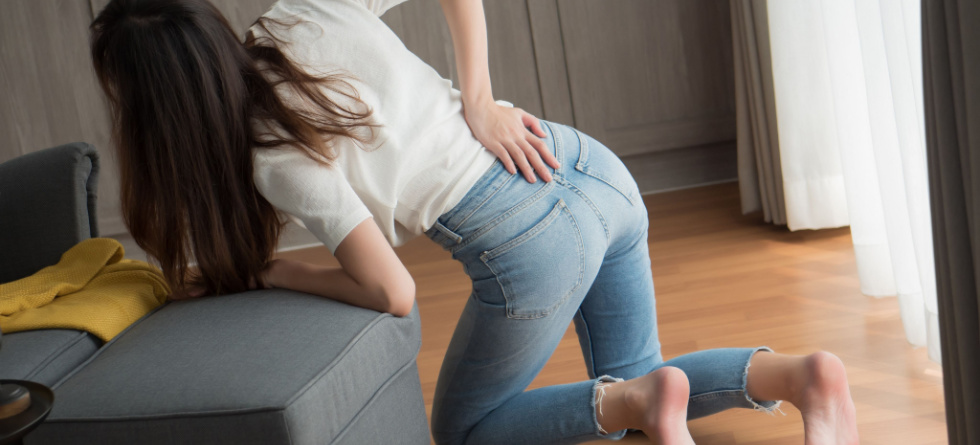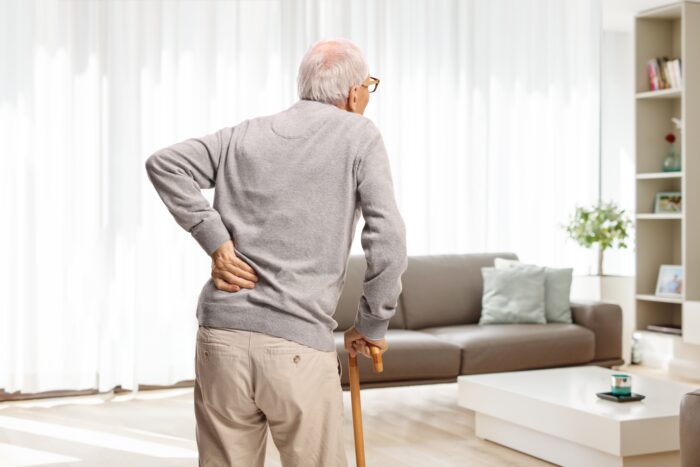
A slipped disc, also known as a herniated disc or a bulging disc, can cause various symptoms in the lower back, depending on the severity and location of the disc herniation.
Here are some common sensations and symptoms associated with a slipped disc in the lower back…
- Pain – The most common symptom is localized pain in the lower back. The pain can range from dull and achy to sharp and stabbing. It may worsen with movements such as bending, lifting, or twisting.
- Radiating Pain – If the herniated disc presses on a nerve root, it can cause radiating pain that travels down the buttock and leg. This pain is often described as sharp or shooting, and it may follow a specific path, such as down the back of the thigh and into the calf or foot. This condition is known as sciatica.
- Numbness or Tingling – Compression of a nerve by the herniated disc can lead to numbness, tingling, or a pins-and-needles sensation in the buttock, leg, or foot. This sensation may accompany or follow the radiating pain.
- Muscle Weakness – In more severe cases, muscle weakness or difficulty moving the leg or foot may occur. This weakness can affect walking, standing on the toes, or lifting the foot.
- Changes in Reflexes – Some people with a slipped disc may experience changes in their reflexes, particularly in the knee and ankle reflexes, due to compression of nerve roots.
- Pain Aggravated by Certain Movements – Activities that increase pressure on the disc, such as bending forward, lifting heavy objects, or sitting for prolonged periods, can exacerbate the pain. Conversely, lying down or changing positions may alleviate some of the discomfort.
- Loss of Bowel or Bladder Control (Rare) – In very severe cases where the herniated disc compresses the spinal cord in the lower back (cauda equina syndrome), there may be loss of bowel or bladder control, which requires immediate medical attention.
Diagnosis and Treatment
If you suspect you have a slipped disc or are experiencing any of these symptoms, it’s important to seek medical evaluation for an accurate diagnosis and appropriate treatment. Diagnosis involves a physical examination, imaging tests such as MRI or CT scans, and possibly nerve function tests.
Treatment options may include…
- Rest and Activity Modification – Initially, avoiding activities that worsen symptoms and allowing time for the disc to heal.
- Pain Management – Over-the-counter pain relievers (NSAIDs) or prescription medications to reduce inflammation and alleviate pain.
- Physical Therapy – Targeted exercises and stretches to strengthen the muscles supporting the spine, improve flexibility, and relieve pressure on the disc.
- Steroid Injections – Corticosteroid injections around the affected nerve root to reduce inflammation and provide temporary pain relief.
- Surgery – In cases where conservative treatments fail to provide relief or if there is significant nerve compression causing severe symptoms, surgical options such as discectomy or spinal fusion may be considered.
Prevention:
To reduce the risk of developing a slipped disc or prevent recurrence…
- Maintain good posture, especially when lifting heavy objects.
- Use ergonomic supports, such as lumbar support cushions or chairs, to maintain spinal alignment.
- Stay active with regular exercise to strengthen core muscles and support spinal health.
- Avoid prolonged sitting or repetitive activities that strain the lower back.
Each person’s experience with a slipped disc can vary, consult with a healthcare provider for personalized diagnosis and treatment options based on your specific symptoms and medical history. Early intervention can help manage symptoms effectively and promote recovery.



